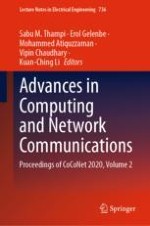2021 | OriginalPaper | Chapter
Haze Removal Using Generative Adversarial Network
Authors : Amrita Sanjay, J. Jyothisha Nair, G. Gopakumar
Published in: Advances in Computing and Network Communications
Publisher: Springer Singapore
Activate our intelligent search to find suitable subject content or patents.
Select sections of text to find matching patents with Artificial Intelligence. powered by
Select sections of text to find additional relevant content using AI-assisted search. powered by
